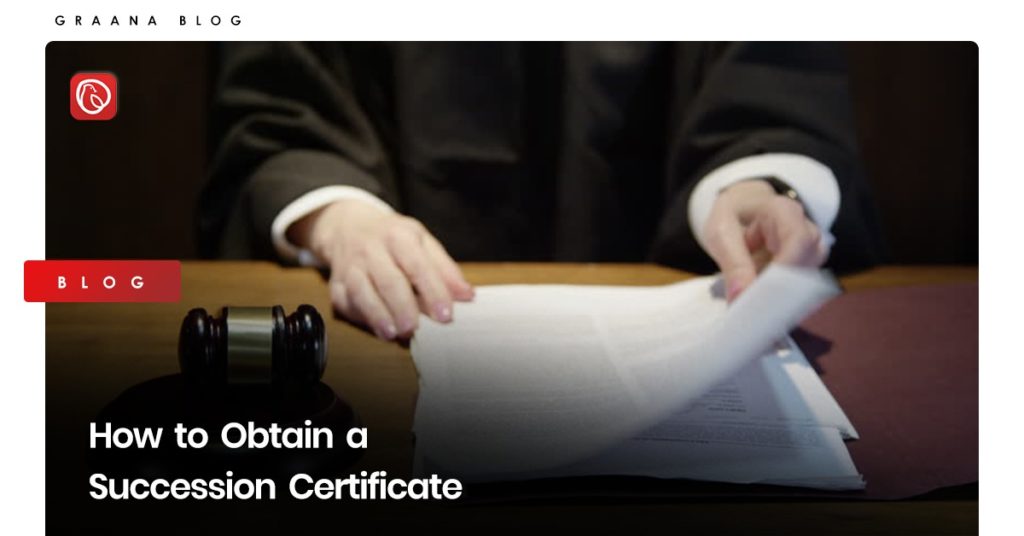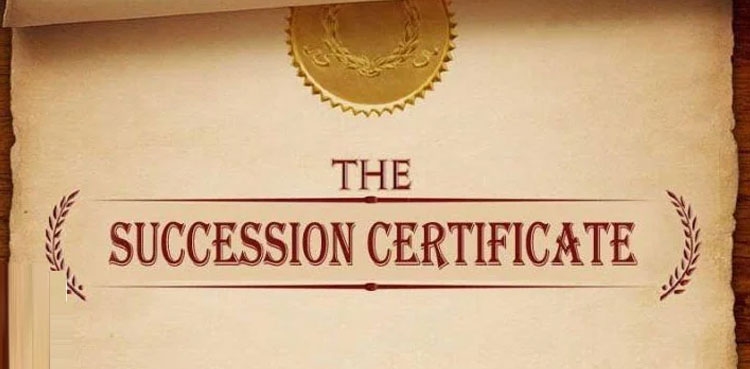Establishing the ownership of legal heirs requires the issuance of a Succession Certificate as well as a Letter of Administration by NADRA, both of which are given to the successor on behalf of the deceased individual.
Understanding the process to obtain this significant document is essential. Graana.com brings you a guide on how to get a succession certificate from NADRA.
Overview of Succession Certificate

NADRA ensures that the Succession Certificate and Letter of Administration are issued in a manner that is open and secure, which will also bring convenience for the legal heirs of the citizen who passed away.
This certificate will be used to determine the legal heirs of the deceased person so that his or her moveable assets can be distributed to them. The digital certificate is equipped with a number of different security elements, as well as a facility for real-time verification.
Documents Needed For Succession Certificate
Along with the application, you need to attach the following documents:
- Certificate of the Deceased Person’s Death and the Certificate of Family Registration (FRC).
- A list of the legitimate inheritors along with copies of each person’s identification card.
- Specific information regarding the real estate and personal property to which the Succession Certificate or Letter of Administration is being applied is required.
- Affidavit that has been sworn by the Oath Commissioner and that includes the following items as required content:
- specifics regarding the moveable and immovable property.
- Specifics on the Legal Heirs and Their Shares, as Certified to be Provided in the Personal Law of Such Legal Heirs
- Any additional document that, in the opinion of the Authority, is suitable
Application fee for succession certificate
Initial Processing Fees
- If the value of the asset/property is more than Rs. 100,000/- then the fee payable is Rs. 20,000/-
- If the value of the asset/property is less than Rs. 100,000/- then the fee payable is Rs. 10,000/-
Duplicate Certificate Fees
- The application fee for a Duplicate certificate is Rs. 5000/-
Steps to Obtain a Succession Certificate
Without the need to go through the courts, applicants can now get Letters of Administration or Succession Certificates according to a streamlined, five-step process that was introduced by NADRA in January 2021.
Because of this, the workload of the judiciary has been reduced by thirty per cent. At district-level sites in ICT, Punjab, and Sindh as well as KP, the Project is currently active.
Application initiation and deceased details
For the issuing of the succession certificate or letter of administration, the applicant must provide the required fees, his credentials, and information regarding the deceased person.
In the national database, the card belonging to the deceased person needs to be marked with the letter “CD.”
At this point in the process, the following information is required:
- Applicant’s CNIC
- Biometric and photograph of the Applicant
- Deceased CNIC number
- The deceased Parents’ name (If not found in the National database)
- Religion and Sect of Deceased
Legal heirs and Assets Details
An affidavit will be required of the applicant to provide the authorisation of legal heirs and asset details, as well as the specifics of each legal heir’s share, in accordance with the legislation.
The identical information will be placed into the system, and one’s relations with the individual who passed away will need to be ensured and verified.
If the legal heirs are physically present, then their biometrics will be taken, but if they are not, then their biometrics will have to be taken at a later step (verification or consent by the legal heirs).
- Name and ID number of Legal Heirs
- Gender of Legal Heirs
- Relation with applicant
- Relation with deceased
- Religion (can be different amongst legal heirs)
- Sect (can be different amongst legal heirs)
- Mobile number and provider name
- Email ID (if available)
- Asset type
- Asset description
- Share of legal heirs of total asset
Biometric Verification/Consent by Legal Heirs
It is planned to do biometric verification on each and every legal heir (if not done already at step 2).
If the biometric information cannot be confirmed for any reason, including a lack of availability in the database, the legal heirs will be contacted and asked to update the biometric information in accordance with the procedure.
On the other hand, verification through (VERISYS) will be carried out if the person being checked is an elderly person, has bandages on their fingers, has had an amputation, or has fingerprints that are difficult to read.
Document Scanning
The following documents will be scanned and saved in the system:
- Affidavits
- Copy of ID document of legal heirs
- Moveable assets details for which the certificate is applied for
- Any other document deemed appropriate by the Authority
Advertisement in Newspaper

Public notices for the general populace shall be published in two (2) newspapers that are distributed nationwide, using the format that is attached (one English and one Urdu). Additionally, advertisements will be presented on the NADRA website in its entirety.
Objection logging
Once the advertisement has been published, any complaints that have been expressed by any of the legal heirs of the deceased should be received in writing from the complainant, and they will be recorded into the system once they have been processed.
In place of the concerns that were voiced, any further work that was being done on the Succession Certificate or the letter of administration will be halted, and the applicant will be given a rejection certificate that was generated by the system.
After that, the applicant will be directed to contact a court of law in order to get a succession certificate or letter of administration. The applicant will get a refund of the application cost, less any applicable processing fees, once the application has been reviewed.
Case Approval
The case will be approved if there is “NO” objection raised by any legal successor of the deceased within fourteen days after the publication of the advertisement in the newspaper.
Printing and Delivery
The applicant is considered to have read and agreed to the contents of the certificate after the officer in charge of the matter gives their stamp of approval. Additionally, an entry detailing the delivery of the certificate will be made into the system.
For more informative content, visit the Graana blog.
FAQs
Here are some FAQs related to the succession certificate
What is a succession certificate?
A succession certificate is a legal document issued by a civil court that grants the right to collect debts and securities of a deceased person. It enables the rightful heirs to distribute the assets and liabilities of the deceased and facilitates the transfer of property and financial assets.
How can I apply for a succession certificate?
To apply for a succession certificate, you need to file a petition in the civil court of the jurisdiction where the deceased person resided or where the assets are located. You will need to submit relevant documents, such as death certificate, details of heirs, list of assets, and any other required information.
Who is eligible to apply for a succession certificate?
The legal heirs and beneficiaries of the deceased person, including spouse, children, parents, and other blood relatives, are eligible to apply for a succession certificate. The court will verify the relationship and entitlement before issuing the certificate.
What is the purpose of a succession certificate?
The main purpose of a succession certificate is to establish the legal right of the applicant to collect the debts, securities, and other assets of the deceased person. It helps in resolving legal and financial matters related to the deceased’s estate.
Is a succession certificate mandatory for inheriting property?
In some cases, a succession certificate is required to transfer or inherit property. However, for immovable property like land or real estate, a separate property transfer process may be necessary, depending on the laws and regulations of the country or state.
How long does it take to obtain a succession certificate?
The time taken to obtain a succession certificate can vary depending on the complexity of the case, the workload of the court, and other factors. Generally, it may take several weeks to a few months to complete the legal process and receive the certificate.
Read More





